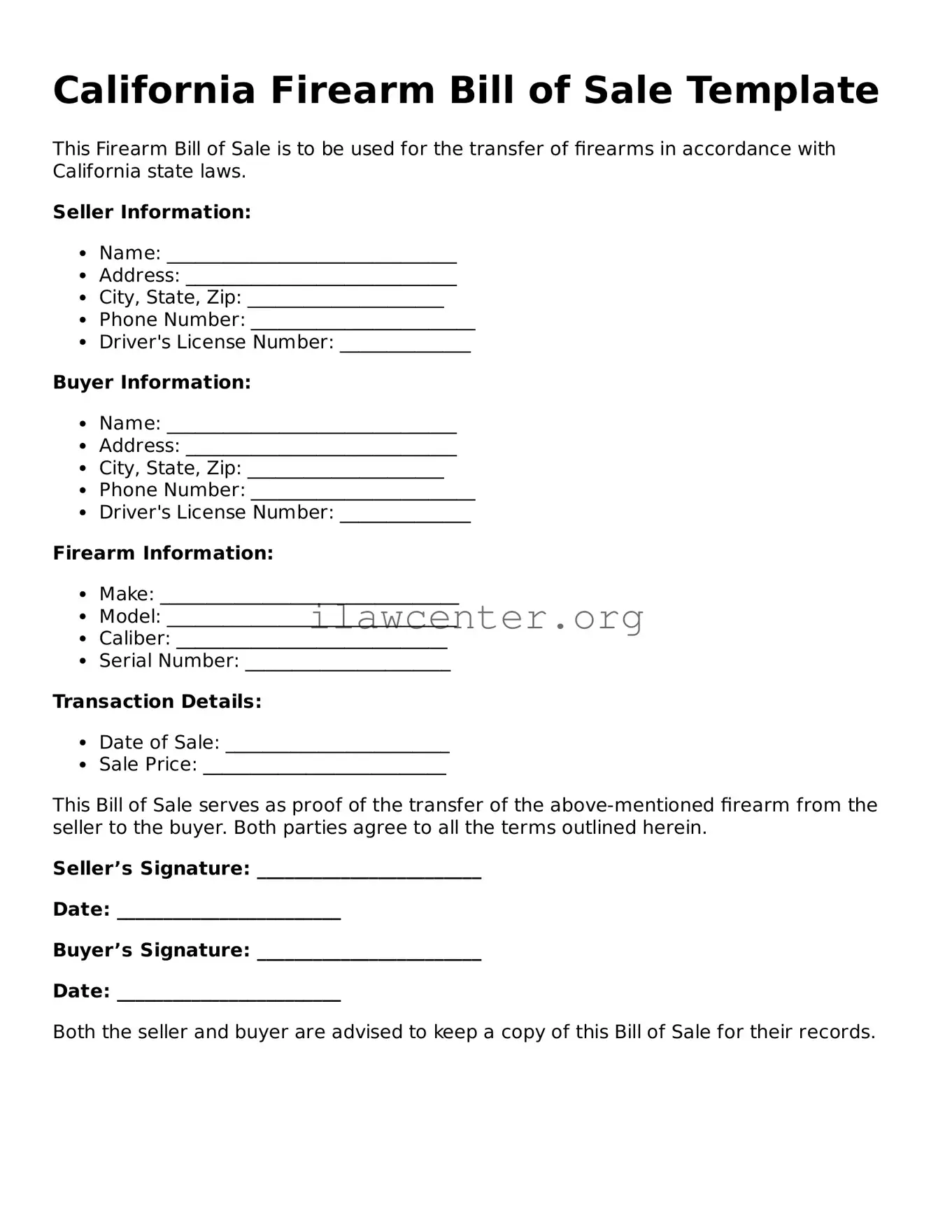What is a California Firearm Bill of Sale?
A California Firearm Bill of Sale is a legal document that records the transfer of ownership of a firearm from one person to another. It provides proof of the transaction and helps both the seller and buyer maintain clear records regarding the sale.
Is a Bill of Sale required to buy or sell a firearm in California?
While California law does not explicitly require a Bill of Sale, having one is highly recommended. This document can serve as a record of the transaction and may help prevent potential legal issues in the future. Additionally, certain firearms transfers, such as those not conducted through a licensed dealer, benefit from this documentation.
What information should be included in the Bill of Sale?
A complete Bill of Sale should include the names and contact information of both the seller and buyer, a description of the firearm being sold (including make, model, and serial number), the date of the transaction, and the sales price. It’s also essential to note the signatures of both parties for validation.
Can I create my own Bill of Sale?
Absolutely! You can create your own Bill of Sale as long as it contains all the necessary information. There are also templates available online that you can use. Just make sure the document is clear and includes all the vital details required for a proper record.
Do I need to notify anyone after the sale?
In California, the seller is required to notify the Department of Justice of the transfer of the firearm. This notification is typically done through the Firearm Transfer Notification. It’s crucial that this step is not overlooked to remain compliant with state laws.
Are there any fees associated with a Bill of Sale?
Generally, there are no fees specifically associated with creating a Bill of Sale. However, if you handle the firearm transfer through a licensed dealer, there may be fees for their services, which can include background checks and administrative processing.
What if I lose the Bill of Sale?
If you lose the Bill of Sale, it’s advisable to try to recreate it as best you can. Even though it’s not easy, having a written record is important for legal purposes. If you need to provide proof of ownership or the transaction in the future, a recreated document may still be beneficial.
Can I use the Bill of Sale for other purposes?
While the primary purpose of a Bill of Sale is to document firearm transfers, you might also use it as a reference for other legal matters, such as verifying ownership or resolving disputes. Always keep a copy for your records.
What happens if the firearm turns out to be stolen?
If a firearm sold under a Bill of Sale is later discovered to be stolen, the buyer may face legal complications. It’s critical for sellers to ensure the firearm’s legitimacy before sale. Buyers should also perform due diligence, such as checking the firearm's serial number with law enforcement, to avoid potential issues.
